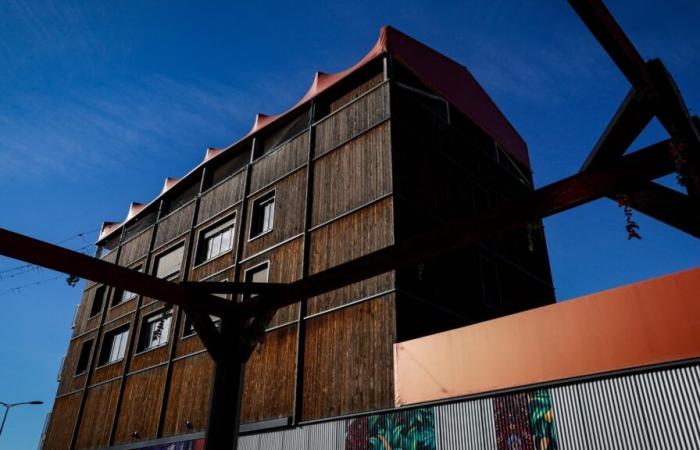
Of the current housing construction programs in Paris, between 25 and 30% are wooden buildings, depending on the municipality. This renewable material is more ecological than concrete.
Steel and concrete towers, the hum of the tram, the congested ring road… In this urban landscape of the 13th arrondissement of Paris, in the south of the capital, a warmly colored building contrasts with the surrounding gray.
This 50-meter building owes its color to wood, a renewable material, chosen to erect its structures and fifteen floors of apartments mainly intended for rental.
The wood construction sector is in its infancy in France but Paris, a mineral city par excellence, aims to extend its use in order to favor the “most ecological” construction methods, despite restrictive regulations and high costs.
“We made the political choice to build green in Paris, particularly since 2020,” recalls Jacques Baudrier, deputy (PCF) to the mayor of Paris in charge of housing.
The elected official supports developing “as much as possible” housing “with wooden structures and windows” or even “cut stone”, to the detriment of concrete and plastic.
“Wood, earth, straw”
On current housing construction programs in Paris, the deputy estimates the share of wooden buildings at a range of 25 to 30%, without giving precise figures.
Still largely dominated by concrete, construction worldwide accounts for nearly 40% of CO2 emissions if we include the lifespan of buildings and their energy consumption. Cement alone generates 7% of global greenhouse gas emissions according to the GCCA, the World Cement and Concrete Association.
“In the buildings that we are in the process of releasing, we are often below 600 kg of CO2 per square meter, while a standard concrete building is more around a ton of CO2 per square meter,” argues Jacques Baudrier.
The RE2020 Environmental Regulation, which sets the standards for new constructions in France, requires taking this turning point since January 1, 2022. “Its objective is to eliminate concrete as it currently exists,” notes Christophe Millet, architect and president of the National Council of the Order of Architects, for whom “we must return to the world of the children's tale of 'The Three Little Pigs': wood, earth, straw”.
“If we want to make very ambitious buildings ecologically, wood is essential today”, agrees Pascal Gontier, architect and professor at the Paris-Malaquais – PSL school of architecture, who has created two wooden buildings and “four in mixed wood-concrete” on the occasion of the Paris Olympic Games.
Persistent brakes
But building with wood involves overcoming many challenges. Indeed, “French wood is expensive,” explains researcher at the National School of Bridges and Roads Arthur Lebée. It is not abundant in the absence of a developed sector, despite the increase in the area of forests.
In the 13th arrondissement of the capital, the Wood Up tower cost “approximately 2,700 euros per m2” compared to “2,300” for a standard building in Paris, estimates its developer Paul Jarquin (REI Habitat). For this project, French wood was transported by river, on the Seine.
But “a good part of the works are often made from imported wood”, points out Arthur Lebée.
In Paris, wooden construction is also subject to strict regulations on fire risk, supervised by the Paris fire brigade. If it is necessary to “take precautions”, wood is “a safe material, it burns at a very precise speed that can be perfectly defined, unlike other materials which are much more unpredictable”, says the architect. Pascal Gontier.
Faced with more restrictive standards than in other European countries, the Order of Architects calls for an “evolution of regulations” as well as an “acceleration of technical opinions”, while Paris wishes to make the capital “the Mecca of green construction in France.





